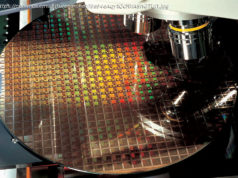Renowned for its line of wood pellet grills, Traeger has taken its game to the next level with the Timberline 850 Wi-Fi-controlled grill. With its companion app, this grill promises a grilling experience that’s all but effortless. Just how smart is this smoker? Read our review.
After having a propane grill catch fire on the deck of his home in the mid-1980s, Joe Traeger retreated to his barn in Mount Angel, Oregon, and designed the very first wood pellet grill. In the more than 30 years since, the Traeger brand has become synonymous with top-of-the-line grills and smokers that use a slow-cooking process to produce mouthwatering meats and poultry.
Innovation remains a key focus for the company, which has packed smart technology into the Timberline series of wood-fired electric grills it debuted in 2017. A downloadable app allows the grill to be controlled from anywhere and provides access to thousands of recipes, enabling grilling lovers of all levels of expertise to “set it and forget it,” said Michael Colston, vice president of product development and engineering for Traeger.
Like other Traeger models, the Timberline grills “leverage pellets to deliver more flavor into the food than charcoal or propane,” Colston said, adding that the new grills’ smart tech “takes things to the next level, [allowing them] to be controlled from anywhere in the world.”
We spent a couple months with the Traeger Timberline 850 Wi-Fi-controlled Wood Pellet Grill ($1,700) to see for ourselves if it delivers on those claims, as well as how it stacks up against other smokers and charcoal and propane models.
This is no lightweight charcoal grill – the Timberline 850 is a bruiser, and you’re going to need help setting it up. Rather than risk ending up in traction by trying to lift this hefty 213-pound grill out of the box, instead peel away the cardboard box it comes in. Next, open the grill door and remove all the boxes and parts stored in the grilling chamber during shipping, including the grills.
Since we wanted to set the smoker up on a raised outdoor deck on one of our test homes, we needed to get the legless main section up a flight of steps. This was a definitely a two-man job that we were barely able to pull off.
Assembling the grill was a relative breeze. Again, you’ll need another person to help you lay the main part of the grill on its back so you can attach the legs. Pro tip: Stick a piece of Styrofoam or the sturdier cardboard packaging from the box underneath the main section of the grill to provide a better angle to attach the legs.
The four legs and the two brackets that go between the legs require a total of 12 screws to attach, which shouldn’t take long at all. Once that’s done, you’ll again need to enlist help to stand the grill up and attach a pair of shelves, which are more cumbersome than heavy. Finally, open the grill and unscrew the handle, which is mounted on the inside for shipping. Use the same two holes to attach it on the outside and you’re nearly ready to start grilling.
Now that the grill is put together and upright, there are a couple of preparations to make before it’s time to grill. First, the grease trap must be primed. This entails pouring about a cup of water into the trap. (As you use your grill, the water in the grease trap will slowly be replaced by grease from the drip tray. If smoke comes out of the bottom of the grill, it’s time to add more water to replace what’s evaporated during the cooking process.)
Next up is seasoning the grill, which allows the pellets to run through the auger for the first time. This is a one-and-done process. Before starting, the grill grates, heat shields, and drip tray must be removed. Now, it’s time to add pellets to the hopper, plug in the grill, and turn it on. Go to the auger menu and pellets will begin to run through the auger and into the firepot. Once a few pellets have reached the fire pot, put the grates, shields, and drip tray back in the grill and initiate the 45-minute preheat cycle. When that’s finished, the grill will be seasoned and ready to use.
When it came to seasoning the grill, everything went perfectly — until it was time to hit the ignite button. Several minutes of pressing the button failed to ignite it. A call to Traeger’s customer service line also proved fruitless. We gave up for the night, disappointed that we wouldn’t be doing any smoking that weekend. Three days later, we tried again — it worked on the first try. Since then, we’ve only had a problem igniting the grill one other time.
The Timberline offers a variety of cooking methods, including using a single temperature, a preset custom cooking option, a custom cook option of your own, or the included probe.
Rather than starting off with a major undertaking like prime rib or a brisket, we dipped our toes into cooking with a simple London broil, which is a cooking method, not a cut of beef. We marinated a two-pound top round steak, then (mostly) followed a recipe from the included Traeger’s Everyday Cookbook. While the recipe recommended a short cooking time of eight to 10 minutes per side at a single temperature of 450 degrees Fahrenheit, we left the meat on the grill a little longer to take it from rare to somewhere between medium rare and medium. The meat quickly reached the desired doneness, thanks to the Traeger’s method of circulating the heat around the meat, which delivers the same temperature and amount of smoke to all three grills.
Now that the smoker was broken in, we moved on to more challenging fare: A prime rib, baby back ribs, and a brisket – all on the same weekend. For the prime rib, we used the temperature probe, which plugs into the smoker’s controller. The probe is then threaded through a grommet that leads into the main cooking chamber and inserted into the meat. It had cooked for about 3.5 hours when the alarm we had set sounded, indicating the meat had reached the desired temperature. The meat was just about perfect, with a medium-rare center and medium-well to well edges.
Next up were a couple racks of baby back ribs. We used Trager’s recipe for Memphis-style ribs, which involves cooking the ribs faster than most other methods sans barbecue sauce. The recipe called for the ribs to cook two to three hours, but the ribs were slightly overcooked after two hours.
One major takeaway from our time with the Timberline smoker was to take the times specified in the recipes with a grain of salt. Checking the temperature of the meat often – either with the probe or a meat thermometer – and cutting into the meat to determine doneness is the best way to ensure the meat is at its most flavorful and juiciest.
We concluded our weekend extravaganza of grilling with a nice-looking brisket. We took the slow-cooking route this time, grilling it at a low and steady 225 degrees F for 18 hours. Unfortunately, due to chef’s error, we left it on maybe an hour too long, resulting in a dry but still tasty and pleasantly smoky piece of meat. The Timberline’s Super Smoke feature gives meat excellent flavor without tasting like it was just pulled out of a three-alarm blaze.
Later, we cooked chicken breasts, skewered veggies, and Korean short ribs on the smoker — all with excellent results. The chicken was juicy and full of flavor, though we did find that it cooked very quickly. The vegetables had a wonderful smoky flavor that you simply won’t get with a propane grill. Finally, the short ribs were absolutely delectable, thanks in large part to the marinade featured in Traeger’s recipe.
The Timberline also offers two preset Custom Cooking recipes: Chicken Challenge and Beginner’s Brisket. Once one is selected, you’ll have the following options: Run now, Edit, Delete, or Back to return to the previous menu. If you select Run Now, the smoker will walk you through all the steps including inserting the probe (if applicable) and igniting the grill.
There is also the option to program a total of four custom cooking methods (if you delete the two that come preprogrammed).
The Timberline’s WiFire Wi-Fi controller easily allows users to change the temperature of the grill, set timers, and connect with other Traeger owners from your phone via the Traeger app… in theory at least. The smart tech baked into the Timberline smoker is its biggest selling point and is a major reason why it costs so much more than a traditional smoker. Unfortunately, based on our time with it, there still seem to be bugs that need to be worked out.
Downloading the app to a smartphone was the first thing we did upon setting up and seasoning the Timberline 850. Unfortunately, getting the app to sync up with the grill and download a recipe to it was a frustrating experience that took up a ton of time and required a call to Traeger reps for guidance.






